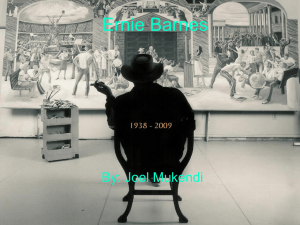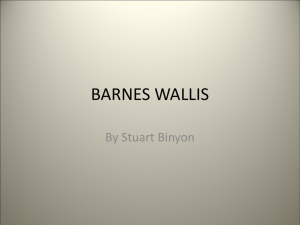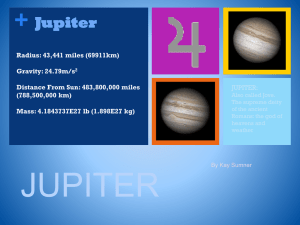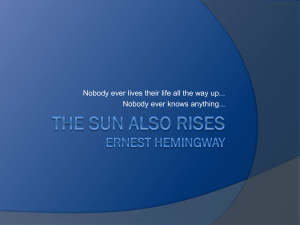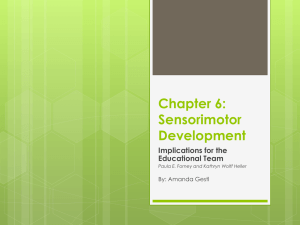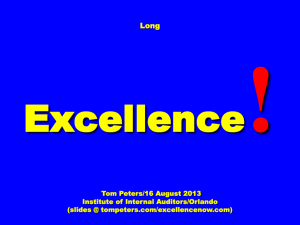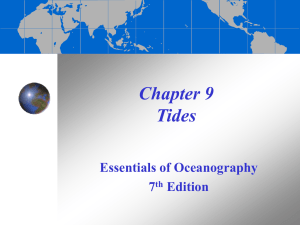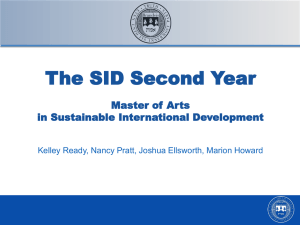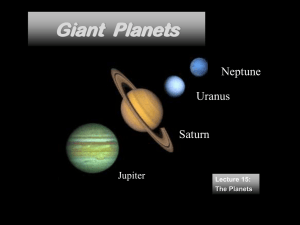exomoons
advertisement
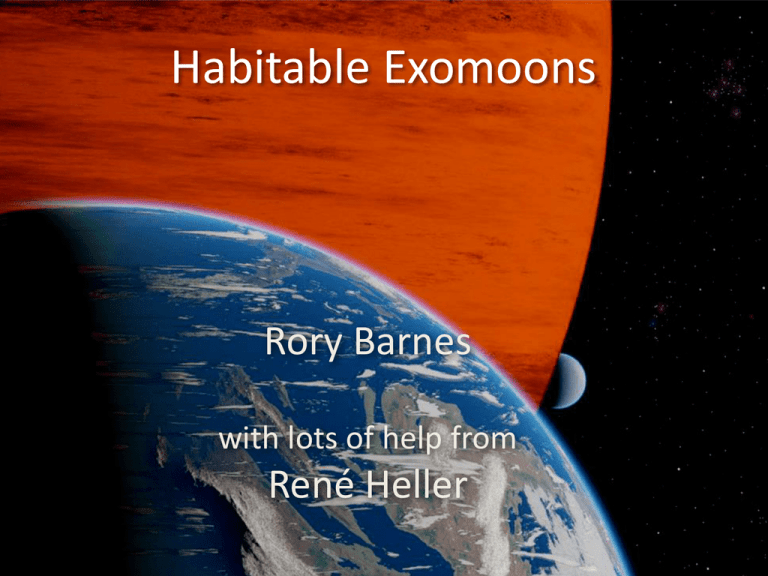
Habitable Exomoons Rory Barnes with lots of help from René Heller Habitable Exomoons are Awesome! Rory Barnes with lots of help from René Heller What is an exomoon? Exomoons!? You’re gonna talk about habitable exomoons!? We don’t even understand habitable exoplanets! The Habitable Zone is about Surface Energy Flux ~300 W/m2 ~30 W/m2 Kepler could find an exomoon. Kepler could find an exomoon. See the exomoon? Exomoon Transits and Timing Variations Kipping et al. (2012) Exomoon Transits and Timing Variations Direct Detection Kipping et al. (2012) Exomoon Transits and Timing Variations TTV Kipping et al. (2012) Exomoon Habitability I. Formation A. Inside Circumplanetary Disk B. Capture C. Planet Migration II. Radiation A. Starlight B. Reflected Light C. Planetary Thermal Emission D. Eclipses III. Tidal Heating The Scale of the Galilean Satellites Europa 10 RJup Io 6 RJup Callisto 27 RJup Ganymede 16 RJup Canup & Ward (`06) transform disks into moons Total mass of moons ~10-4 of planet Earth = 0.003 Jupiter Williams, AsBio, submitted Capture Possibilities Williams, AsBio, submitted Capture Possibilities Williams, AsBio, submitted Capture Possibilities Planet has to move to 1 AU! Williams, AsBio, submitted Planetary Semi-Major Axis (AU) Jupiter’s Radius Time (Years) Satellite Semi-Major Axis (AU) Galilean Moons Namouni (2010) Jupiter’s Radius Time (Years) Satellite Semi-Major Axis (AU) Planetary Semi-Major Axis (AU) Instabilities due to planet’s shrinking gravitational influence Namouni (2010) Jupiter’s Radius Time (Years) Satellite Semi-Major Axis (AU) Planetary Semi-Major Axis (AU) Moons still safe at 1 AU Namouni (2010) Exomoon Formation/Composition May form with planet (<10 Myr) - Icy worlds (volatile rich) - But small May be captured - Requires precise encounters - Captured body must have water - Terrestrial planets need ~100 Myr to form Moon must survive migration to HZ The Radiation Environment of Exomoons Heller & Barnes (2013) Starlight Only – The Habitable Zone Reflected Light – Almost Negligible Multiply your HZ boundary by this factor For F star, outer HZ pushed out by ~0.01 AU at aps < 5 RJup Heller & Barnes (2013) Reflected Light – Almost Negligible Multiply your HZ boundary by this factor There is a “Reflection Correction” For F star, outer HZ for habitable exomoons pushed out by ~0.01 AU at aps < 5 RJup Heller & Barnes (2013) Thermal Emission Heat from star (almost negligible) Heat from Contraction (important early) Longitude Heller & Barnes (2013) Planets Cool with Time* * adopted from Baraffe+ (1997, 2003) A Moon at Europa’s Orbit Run. Grnhs Limit Time in a Runaway Greenhouse Time in a Runaway Greenhouse The moon could lose its water early. There is a “Cooling Edge” for habitable exomoons Eclipses Longitude Heller & Barnes (2013) Eclipses Eclipses No Eclipses Stellar radiation dominates With eclipse -> sub-planetary point is cold No eclipse -> sub-planetary point is hot Heller & Barnes (2013) Radiation The HZ applies Reflection Correction Cooling Edge Eclipses could affect local climate Tidal Heating Caused by gravitational flexing of the crust Source of tectonics on Io, Europa and Enceladus Could be very large for large moons Could also produce exo-Europas Could sustain plate tectonics indefinitely Earth orbiting Jupiter orbiting the Sun Tidal Greenhouse Tidal/Radiation Greenhouse Super-Io Tidal Earth No Tidal Heating Earth orbiting Jupiter orbiting the Sun Earth orbiting Jupiter orbiting the Sun Earth orbiting Jupiter orbiting the Sun There is a “Tidal Heating Edge” to exomoon habitability Conclusions Large exomoons probably rare Kepler can detect, but hard Planets add energy to the classical HZ A reflection correction pushes HZ out (slightly) Thermal radiation causes a cooling edge Eclipses could alter weather A tidal heating edge could sterilize close moons Tidal heating could sustain star-free habitats For more info: Heller & Barnes, 2013. “Exomoon Habitability constrained by illumination and tidal heating.” AsBio, 13, 18-46. Tidally Heated to Habitable? Reynolds, McKay & Kasting (1987) Radiative + Tidal HZs Reynolds, McKay & Kasting (1987) Orbits After Capture Porter & Grundy (2011) Reflected and Thermal Light (“inplanation”) Heller & Barnes (2013) Heller & Barnes (2013) Heller & Barnes (2013) Heller & Barnes (2013) Heller & Barnes (2013) Heller & Barnes (2013) Heller & Barnes (2013)
